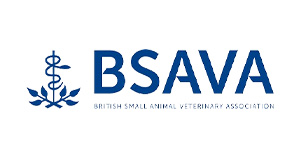TB or not TB?
Published on: Apr 25, 2023
I’ve been thinking about my TBAS sett surveys, and – after a conversation with a client following a slaughterhouse case – thought this short Q&A might be helpful. I want to turn my cattle out. What can I do to reduce the risk of them getting TB? If your grazing land is bounded by mature hedgerows or copses, erect a single strand electric fence 1m inside the boundaries to stop your animals foraging along the field edges, as there may be setts and latrines present, especially during periods of prolonged dry weather. Don’t feed youngstock on the ground or in troughs on the ground. If you have to feed concentrates, use raised troughs with or without rollers. Don’t leave mineral licks on the ground.
What is a high-risk cow?
TB and Johne’s Disease are caused by similar bacteria. You will know that once a cow has been identified with a raised result for Johne’s that she is on a one way ticket to showing a positive result sooner or later. It is a similar story with TB and although the skin test involves the comparison of the top (avian) reaction with the lower (bovine) one, the present consensus is that the presence of a bovine reaction indicates exposure to infection. Young cattle generally have few, if any, bottom (bovine) reactions whilst 25-30% of cows in some herds can have them. These herds could have an undetected TB problem.
How can you identify a high-risk cow?
Like Johne’s, the bovine reactions can fluctuate in size or not be present at every test. With TB, your herd’s records for the last 10 years can be accessed online and the results for individual cows can be checked. If a cow is found to have bovine reactions at successive tests or over a period of time, then it is possible that she will become either a reactor, an IR or a slaughterhouse case. This information tends to be gained retrospectively, ie after you have received that phone call telling you that the cull cow you sent off is a suspect slaughterhouse case.
A High-Risk Cow can also be one whose cohort was an earlier reactor or IR, indicating that they were exposed to the same source of infection at more or less the same time. But what if these High-Risk cows could be identified and culled before they became problems? Then with good biosecurity, your herd could be on the way to staying on annual testing! If you’re interested in identifying your High-Risk cows, please contact me.

Author –
Ralph Drouin
Shepton Vets explains how to lower the risk of bovine tuberculosis (TB) in cattle turned out to graze. Learn about electric fencing, feeding practices, & high-risk cow identification.
bovine tuberculosis in cattle, TB in cattle turned out, electric fence for cattle TB, TB risk factors for cattle, Johne’s Disease in cattle, high-risk TB cows, identify TB positive cattle, herd biosecurity for cattle, Shepton Vets cattle health











